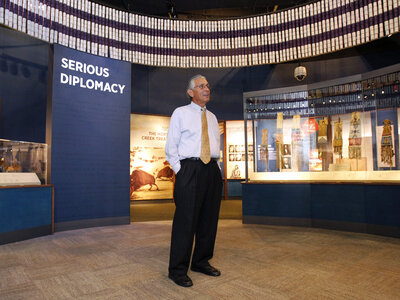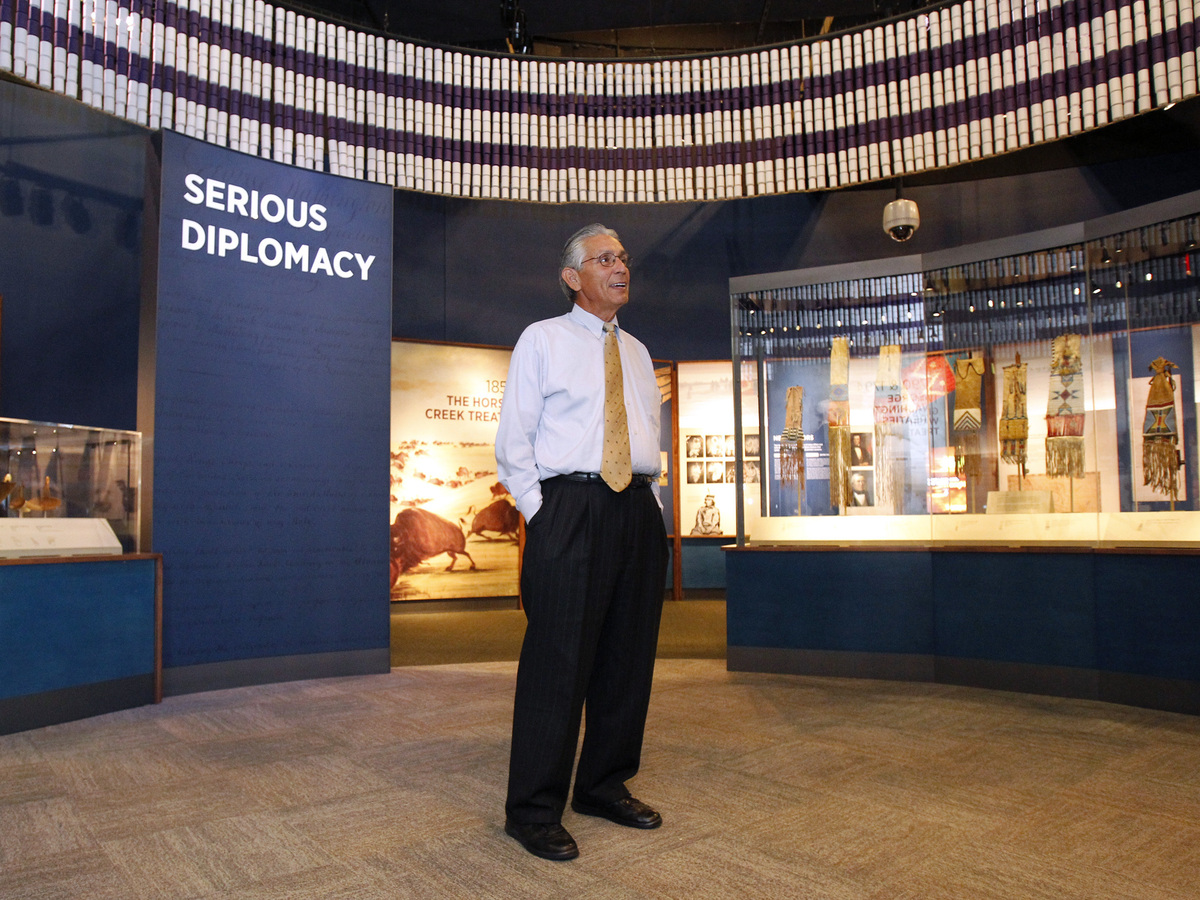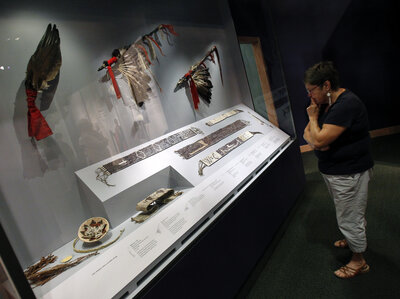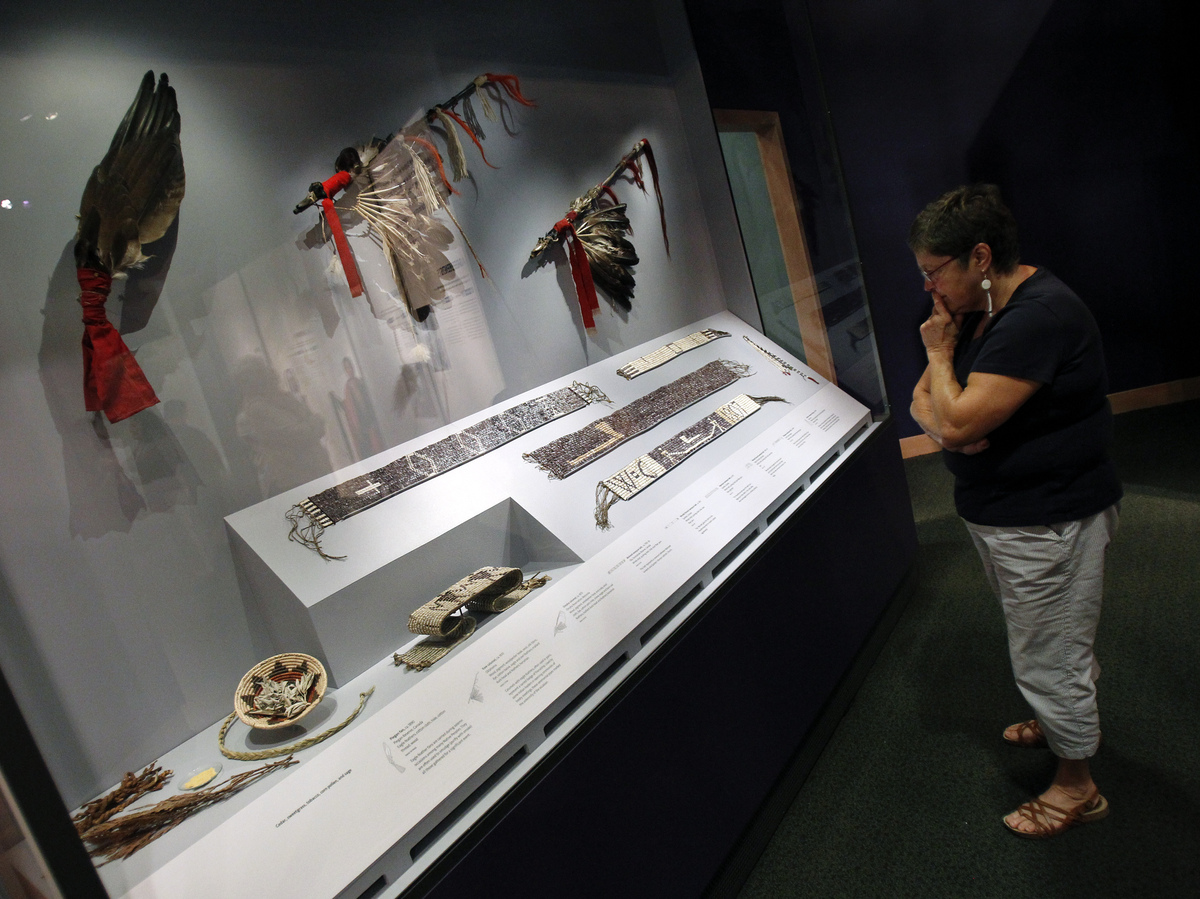Broken Promises On Display At Native American Treaties Exhibit

Suzan Shown Harjo points to a signature on Treaty K at the National Archives. The document will be on display in 2016 at the Smithsonian's National Museum of the American Indian for an exhibit on treaties curated by Harjo. James Clark/NPR hide caption
toggle caption James Clark/NPR 
Suzan Shown Harjo points to a signature on Treaty K at the National Archives. The document will be on display in 2016 at the Smithsonian's National Museum of the American Indian for an exhibit on treaties curated by Harjo.
James Clark/NPR A rare exhibit of such treaties at the Smithsonian's National Museum of the American Indian in Washington, D.C., looks back at this history. It currently features one of the first compacts between the U.S. and Native American nations – the Treaty of Canandaigua.

The Treaty of Canandaigua is one of the first treaties signed between Native American nations and the U.S. Courtesy of the U.S. National Archives and Records Administration hide caption
toggle caption Courtesy of the U.S. National Archives and Records Administration 
The Treaty of Canandaigua is one of the first treaties signed between Native American nations and the U.S.
Courtesy of the U.S. National Archives and Records Administration "Article 6 says that they will provide goods in the amount of $4,500, 'which shall be expended yearly forever,' " explains museum director Kevin Gover, a citizen of the Pawnee Nation of Oklahoma.
Every year, those goods from the U.S. government include bolts of cloth to distribute to tribal citizens. Haudenosaunee leaders have said that cloth is more important than money, because it's a way to remind the U.S. of the treaty terms, large and small.

Kevin Gover, director of the National Museum of the American Indian, stands inside the "Nation to Nation" exhibit. Paul Morigi/AP hide caption
toggle caption Paul Morigi/AP 
Kevin Gover, director of the National Museum of the American Indian, stands inside the "Nation to Nation" exhibit.
Paul Morigi/AP At least seven other original paper treaties will be featured in rotation at the museum before the exhibit "Nation to Nation" ends in the fall of 2018. For now, the documents not on display are kept at the National Archives, where one almost-forgotten treaty is stored underground.
The light-blue pages of Treaty K are signed without ratifying seals or ribbons — like 17 other unratified treaties signed by representatives of the U.S. government and Native American nations in California during the Gold Rush.
California lawmakers pressured the U.S. Senate not to ratify the treaties, which promised reservation land to the Native American nations. There was one reason the lawmakers didn't want the treaties, according to the exhibit's curator Suzan Shown Harjo of the Cheyenne and Hodulgee Muscogee Indian nations.
"The answer is always gold," she says. "And if it's not gold, it's silver. And if it's not silver, it's copper. And if it's not, go right through the metal chart."

A museum visitor views wampum belts, fans and other diplomatic tools used during the treaty-making process. Paul Morigi/AP hide caption
toggle caption Paul Morigi/AP 
A museum visitor views wampum belts, fans and other diplomatic tools used during the treaty-making process.
Paul Morigi/AP "They were not only scattered from their lands, and lots of people murdered during the Gold Rush, but they were erased from history," she explains.
While many treaties resulted in tragedies, Harjo says she hopes museum visitors will take away the full span of this diplomatic history.
"People always think of broken treaties and the bad paper and the bad acts, and that is our reality. But it didn't begin there. It began on an honorable footing," she says.
Anyone who wants a strong grounding in American history, Harjo adds, needs to understand the history of these treaties.
"The people who are citizens of the U.S., these are your treaties. They aren't just the Indians' treaties," she says. "No one gave us anything. No one was dragging any land behind them when they came here. This was our land."

No comments:
Post a Comment